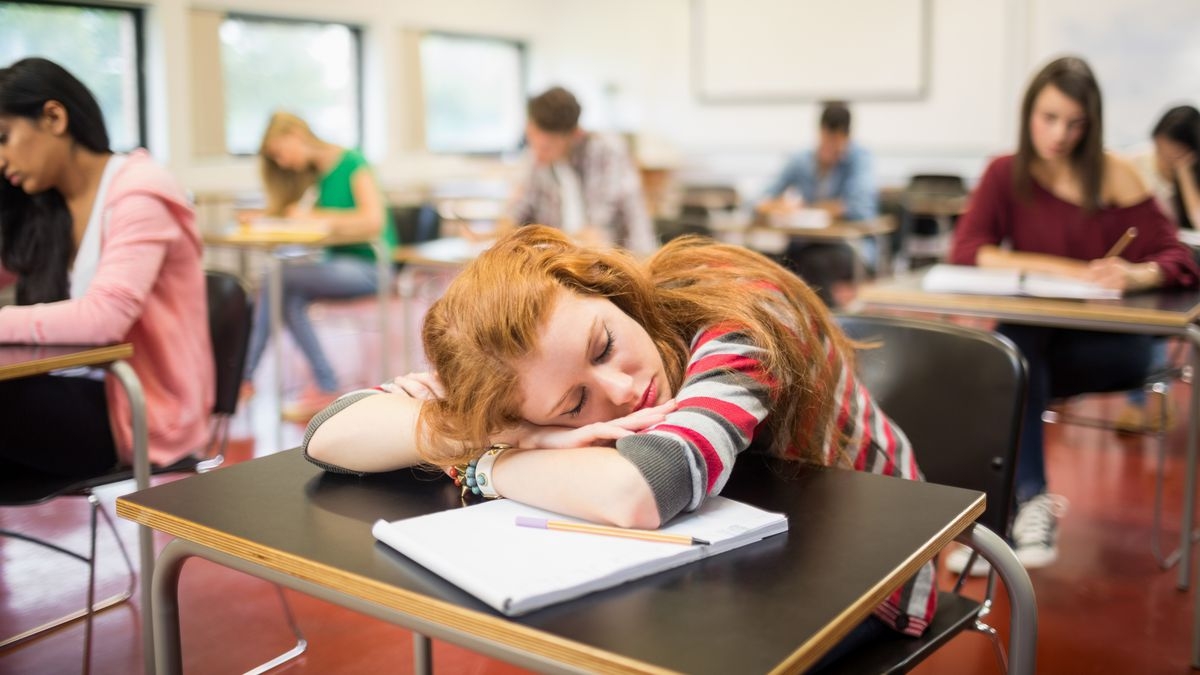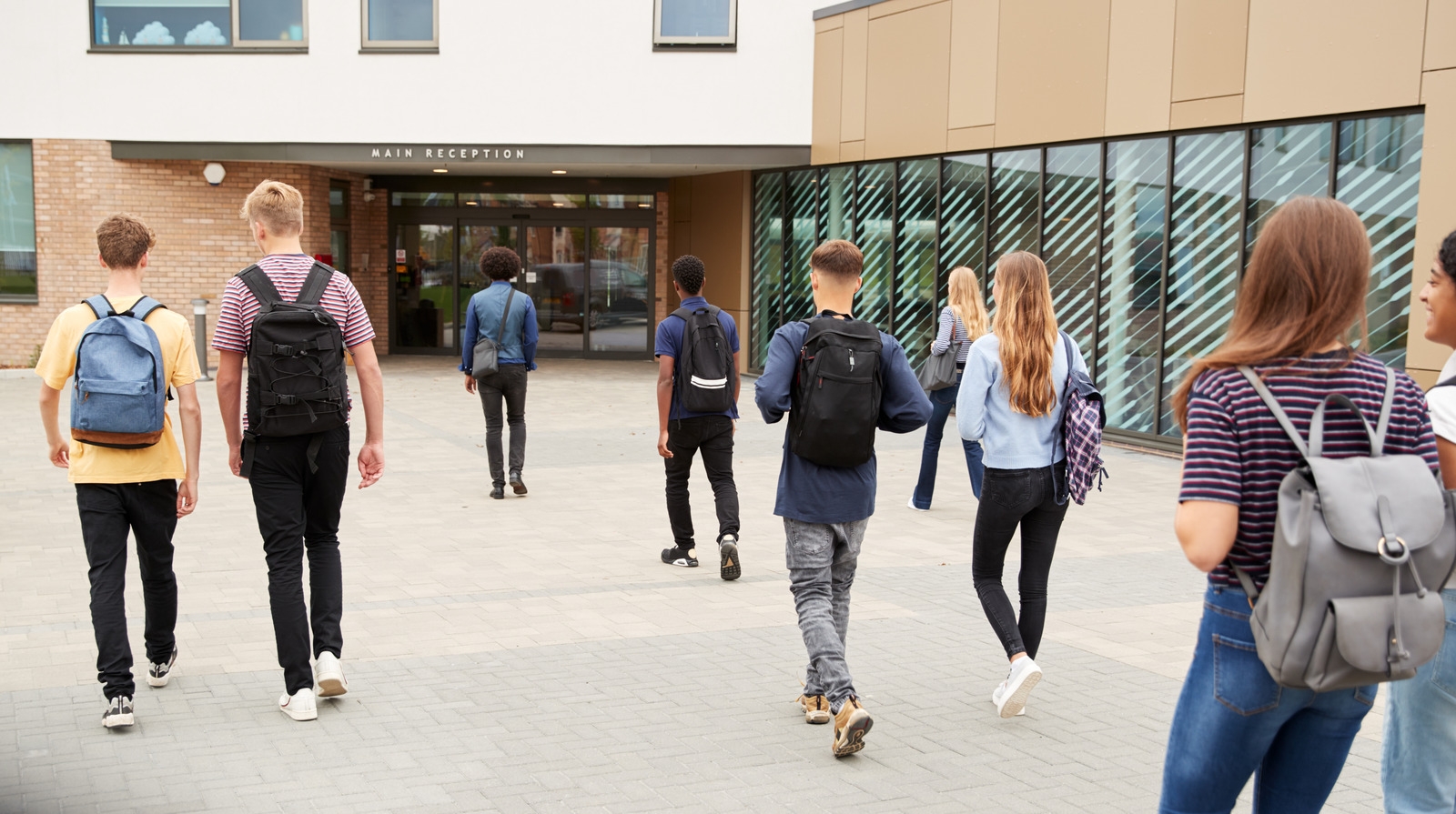Why do American Schools Open So Early: Bad or Good for Students?
 |
| Why do American Schools Start so Early |
| Table of Content |
Despite recommendations from the American Academy of Pediatrics and other organizations, many middle and high schools continue to start the school day so early that students struggle to get enough sleep.
Children of varying ages have different sleep requirements. The National Sleep Foundation recommends that children aged 6 to 13 get 9 to 11 hours of sleep per night. Teenagers aged 14 to 17 require 8 to 10 hours of sleep each night. However, research shows that the vast majority of American teenagers do not get enough sleep. Sixty percent of sixth to eighth graders report not getting enough sleep on school nights. That figure far exceeds 70% for high school students.
Young people frequently do not get enough sleep due to late bedtimes and early school start times. Sleep deprivation has a negative impact on student health, happiness, and academic success, with potential long-term health consequences.
Do you ever wonder why American schools start so early? Check it out to find out!
What Are Common School Start Times in the US?
An average high school in the United States begins its day at 8:00 a.m. However, this time varies from state to state. With the exception of eight states in the middle of the country, the typical start time is between 7:45 and 8:15 in every state.
There are additional considerations, such as the school's type and the district it is in, when determining the time classes begin. Some 54% of suburban high schools, for instance, begin their day at a time that is earlier than 8:00 a.m. Contrarily, more than half of charter high schools and most schools with fewer than 200 students start after 8:00 a.m. (Private school information was left out of this analysis.)
Middle school average start times are harder to come by, and the data that is available is older and does not account for public charter or private schools. The Centers for Disease Control and Prevention found that, on average, middle schools across the United States commenced classes at 8:04 AM during the 2011-2012 academic year. It's a little bit after graduation from high school. Even among states, there was a wide range of middle school morning start times. It was also noted in this analysis that the typical morning start time for secondary schools that house both middle and high school students was 8:08 a.m.
The District of Columbia, Alaska, and South Carolina were the only states where student days began at or after the suggested earliest time of 8:30. (on average, aggregating the starting times from the various school districts). This summary should be enough to make even the hardest morning people flinch:
→ 7:30 am — Louisiana’s sleepy-eyed students shuffle into class.
→ 7:36-7:45 am — lessons start at public high schools in Connecticut, Massachusetts, Nevada, and New Hampshire.
→ 7:46-7:55 am — it is not even 8:00 am yet, but high school students are already taking classes in Colorado, Delaware, Florida, Maine, Michigan, Mississippi, Missouri, New Jersey, Ohio, Pennsylvania, Rhode Island, West Virginia, Wisconsin, and Wyoming.
→ 7:56-8:05 am — now it is the turn of high schoolers in Alabama, Arizona, Arkansas, California, Indiana, Kansas, New Mexico, New York, Oklahoma, Tennessee, Utah, and Washington.
→ 8:06-8:15 am — well past the hour, students file into class in Georgia, Hawaii, Idaho, Illinois, Kentucky, Montana, Nebraska, North Carolina, North Dakota, Oregon, South Dakota, Texas, Virginia, and Vermont.
→ 8:16-8:25 am — Just two states start school this late: Iowa and Minnesota. But they are not the latest.
→ 8:26-8:35 am — that is how late high school starts in Alaska and South Carolina. But wait…
Only in Washington DC, Alaska, and South Carolina does the school day start at or after the recommended earliest time of 8:30 am.
Why do American Schools Start so Early?
 |
| Why do American Schools Start so Early - Photo: vox |
School buses are a significant component of the solution. Several school districts alternate picking up children from different schools using the same buses: first the high school students, then the middle school students, and finally the primary students. South Carolina is one of the "latest" states on this map since the sequence there is typically reversed.
Even though early school starts are not the main reason of teen sleepiness, they are a significant contributing factor, especially since post-puberty teenagers have trouble falling asleep before 11 pm due to their normal sleep cycles.
According to a National Sleep Foundation survey, 87 percent of high school kids and 59 percent of students in grades 6 through 8 report sleeping less than the 8.5 to 9.5 hours per night that is advised. The average American adolescent is "chronically sleep-deprived and pathologically sleepy," according to Sleep Review, the nation's foremost soporific periodical.
Many detrimental effects have been connected to chronic sleep loss in teenagers, including:
• Teenagers who have sleep debt or their sleep-wake cycles are more likely to make poor decisions, lack motivation, and be generally less aware, which will affect their academic achievement.
• Sleep issues and mood problems, particularly depression, are correlated in both directions.
• High school students who sleep irregularly or insufficiently are more likely to engage in risky behaviors like driving while intoxicated, smoking, using drugs, and misbehavior.
• Numerous studies have linked a lack of sleep to obesity. According to one study, the odds of getting obese rose by 80% for every hour of sleep lost over an extended period of time.
• Lack of sleep causes metabolic disturbances that raise the risk of type 2 diabetes.
• The likelihood of car accidents rises when people are sleepy. Teenagers are particularly impacted. According to a 1995 study, drivers 25 years of age or younger were responsible for 55% of drowsy driving-related accidents.
Because of all those factors, the CDC and the AAP both support for later school start hours and encourage parents to do the same. Thankfully, some progress has been made in this. SB 328, which stipulates that middle schools must open no sooner than 8:00 am and high schools must open no earlier than 8:30 am, was signed into law by California Governor Gavin Newsom in 2019. In 2022, it will become effective.
Why is it bad for students to start early?
Several studies have demonstrated that early start hours for schools are linked to pupils obtaining less sleep, which has a detrimental impact on students' academic performance. Little sleep causes students to have trouble concentrating in class, which affects their GPA. They might also feel worn out and irritable.
Other concerns with early school start times and the resulting insufficient sleep include:
♦ Increased likelihood for participating in risk-taking behaviors, such as bullying and fighting.
♦ Greater chance of unhealthy behaviors including alcohol and drug use and tobacco smoking.
♦ Higher risk of athletic injury.
♦ An increase of depressive symptoms and suicidal ideation.
♦ Increased risk of motor vehicle accidents.
A lack of sleep also has long-term physical and mental health consequences. Poor quantity and quality of sleep can lead to health concerns such as diabetes, cardiovascular disease, and obesity.
Adolescents and Sleep
The American Academy of Sleep Medicine recommends that teenagers aged 13 to 18 years should regularly sleep 8 to 10 hours per day for good health. Adolescents who do not get enough sleep are more likely to
♦ Be overweight.
♦ Not engage in daily physical activity.
♦ Suffer from symptoms of depression.
♦ Engage in unhealthy risk behaviors such as drinking, smoking tobacco, and using illicit drugs.
♦ Perform poorly in school.
Due to changes in biological rhythms during puberty, adolescents need to sleep later in the morning and feel sleepy later in the evening. Poor sleeping patterns frequently accompany these physiologic changes (including irregular bedtimes and the presence of electronics in the bedroom). School start times during the week are the primary factor in why pupils get up when they do. Most teenagers don't get enough sleep as a result of late bedtimes and early start hours for school.
Everyone Can Play an Important Role
Parents
Demonstrate and promote practices that lead to restful nights: Maintain a regular schedule for going to bed and getting up, even on the weekends. Young people, teens, and adults alike can all benefit from doing this.
Teenagers who have bedtimes enforced by their parents tend to sleep longer each night than their peers whose parents do not. Lower the lights.
Teens are less likely to obtain enough sleep if they are subjected to additional light (from sources like room lighting or devices) in the evening. Get the media to stop reporting for a while.
Computers, video games, and mobile phones all have the potential to keep people up beyond their bedtimes. Parents should think about enforcing a curfew for the usage of electronic devices or removing them from the bedroom.
Get in touch with the school district to request a later start time. Possible rises in transportation costs and conflicts in availability are two recurring cautions.
Health care professionals
Educate adolescent patients and their parents about the importance of adequate sleep and factors that contribute to insufficient sleep among adolescents.
School officials
Learn more about the research connecting sleep and school start times. Good sleep hygiene in combination with later school times will enable adolescents to be healthier and better academic achievers.
Best School Start Times
 |
| Best School Start Times - Photo: healthdigest |
It has been recommended by both the American Academy of Sleep Medicine and the American Academy of Pediatrics that high schools and junior highs not start before 8:30 in the morning. 5 Both groups stress the importance of getting enough shut-eye for students to be focused and academically successful in the classroom.
Children's and teenagers' sleep patterns are heavily influenced by their biology. Most adolescents experience a phenomenon known as "phase delay," or later sleep onset and wake times, at the start of puberty. A two-hour time change may occur as a result of this phase delay on the body's internal clock. Because of this, most teenagers have trouble going to sleep before 11:00 p.m. and would benefit from sleeping in until at least 8:00 a.m.
This physiological requirement can be met by delaying the start of school. Adolescents can better manage their sleep by taking care of their sleep hygiene in general, including getting a good night's sleep and implementing other back-to-school sleep tips.
Cultural norms are another factor that disrupts students' slumber. Middle and high school students in the United States frequently stay late at school or work after hours to attend to their many extracurricular commitments. High school students may not get enough sleep because they have more homework, use technology late at night, and have fewer parent-set bedtimes than younger students.
Why Are Later School Start Times Better?
Later school start times support the biological needs of adolescents; they increase the number of sleep adolescents gets. Other benefits of later start times include:
♦ Improved attendance at school.
♦ Decreased tardiness.
♦ Better student grades.
♦ Fewer occurrences of falling asleep in class.
♦ Reduced irritability and depressive symptoms.
♦ Fewer disciplinary issues.
♦ A decline of motor vehicle crashes.
One study showed a 16.5% decrease in the teenage crash rate after the school start time was pushed back one hour.
Disadvantages of Later School Start TimesWhile there are many advantages to later school starts, there are a few potential drawbacks as well: Scheduling issues. Issues can come up for academic and athletic competitions with schools that have earlier dismissal schedules and earlier start times. Transportation difficulties. More buses on the road later in the day as a result of later start timings may result in greater traffic and longer travel times. Childcare. Some families rely on older students to watch over younger siblings after school; however, if high schools let out later than elementary or middle schools, this may be more challenging. But, with adaptability and careful planning, these issues can probably be resolved. |
 10 Unique Life Lessons to Remember That No School Teach You 10 Unique Life Lessons to Remember That No School Teach You The following life lessons learned from the masters will help you have a new perspective on investment and business, so that you can apply in ... |
 Top 25+ Basic Life Skills That Every Child Must Learn Before Going to School Top 25+ Basic Life Skills That Every Child Must Learn Before Going to School Do you think your kid is well-equipped with essential life skills to face the world before going to school? Top 25+ life skills for kids ... |
 Top 10 The Best Business Schools in The USA Top 10 The Best Business Schools in The USA If you want to study business and management in the United States, read on for an overview of the top 10 business schools in the ... |























